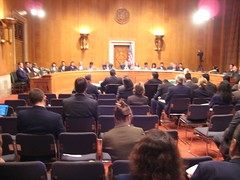
Here is a fascinating government document (not a contradiction in terms) that you can read for free on the web.
The Invisible Cryptologists is the story of an all-African American unit of the U.S. Signals Intelligence Service (SIS) that served from World War II to the mid-fifties. These men and women, all college graduates, worked at mostly boring low-paying jobs with little hope of promotion, but they categorized and translated thousands upon thousands of enemy messages. Their unit was variously called "the snake pit," "the plantation," and "the black hole of Calcutta." Not a lot of respect there.
Here is one worker explaining how he moved from the boring task of typing punch cards to a more challenging job: "I knew that somewhere people were selecting messages, and I began to wonder how did they pick some messages and throw some away. So as a result, I enrolled in a Russian course at the Department of Agriculture. Soon, I was off the machines and pulling tapes, based on keywords. Once we pulled the tapes, we bundled them in categories and put numbers on them that designated subject areas. But it was a little more complicated than that. Many times the print on the tape was not clear, so we had to read the punched holes. I think what we did was was critical because we threw away what we thought wasn’t any good. If there was anything good in there, it was lost – it went in the burn bag."
Tip of the iguana tail to
Government Book Talk.




